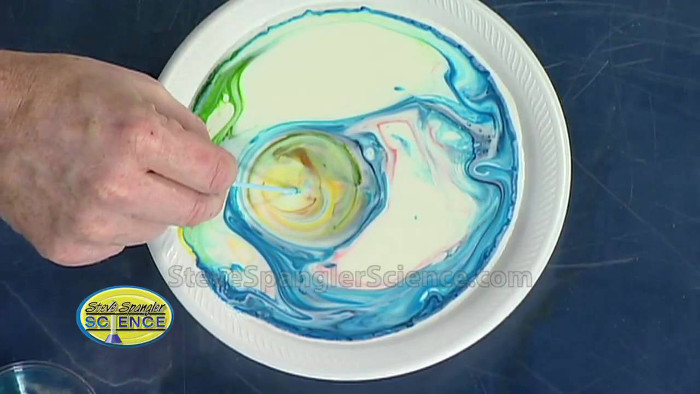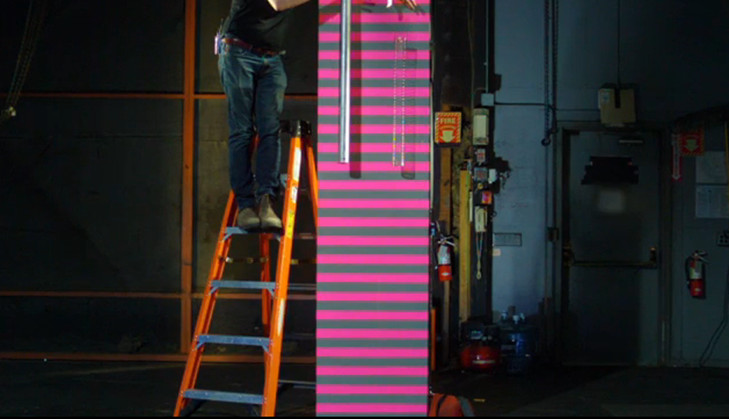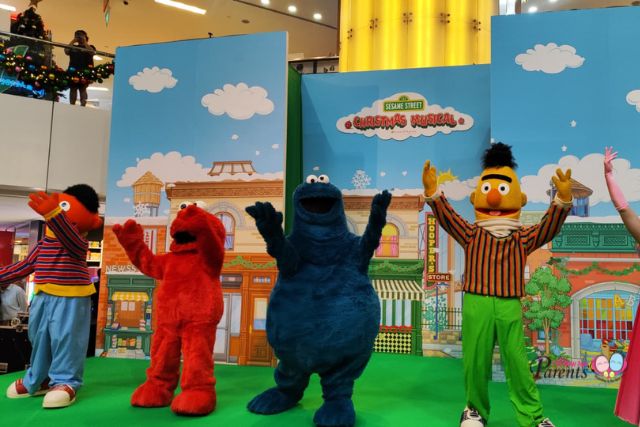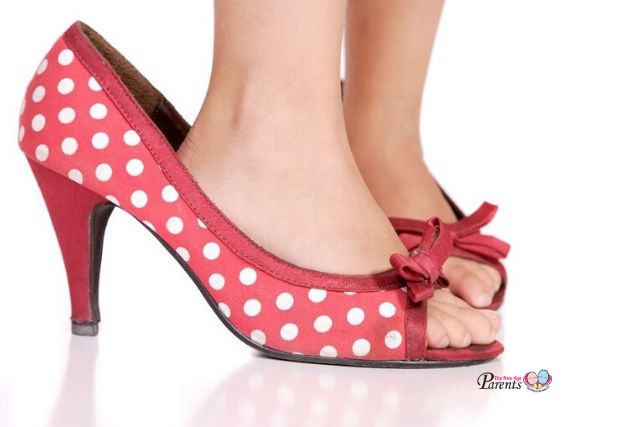Children are by nature curious creatures, and there’s no better time than the present to latch on to their interest and create opportunities for them to discover the world around them in engaging ways.
Inspire your kids to love science with these experiments, all in the comforts of your home.
#1 Secret letter
 Image source: Wikihow
Image source: Wikihow
Materials needed:
- Water
- Lemon juice
- Cotton bud
- White paper
- Heat source
Directions:
Mix the water and lemon juice. Dip the cotton bud into the mixture and write your message onto the white paper. Wait for the juice to dry so it becomes completely invisible. To read the secret message, heat the paper by holding it close to a light bulb.
How does this work?
Lemon juice is acidic, and acids undergo a chemical reaction (oxidize) when heated. When placed near a source of heat, the lemon juice oxidizes and turns brown, and so the message is revealed.
#2 Crystal rainbow
 Image source: Little bins for little hands
Image source: Little bins for little hands
Materials needed:
- 9 Tbsp borax powder
- 3 Cups of water
- Glass jar
- Ice cream stick
- Pipe cleaners in the colours of the rainbow.
Directions:
Cut pipe cleaners to fit easily inside the jar, and fold one end of each pipe cleaners around the ice cream stick. Heat the water (adult supervision is necessary for this step) until it starts to boil. Pour the boiling water into a bowl with the borax powder and stir to create a cloudy mixture.
Carefully pour the hot mixture into the jar. Add pipe cleaner creation into the jar, ensuring that most of the pipe cleaners are submerged in the liquid. The stick should rest on the neck of the jar to keep the pipe cleaners in place. Let the jar rest in a safe place overnight. In the morning, admire your beautiful crystal rainbow!
How does this work?
Since the proportion of borax powder to water is high, the hot solution will still contain solid particles after mixing, because it is already fully saturated. The cooler the liquid gets, these particles will settle on the pipe cleaners and contained sides and form crystals. Bigger crystals will form around the original tiny crystals as the solution continues to cool.
#3 Milky way
 Image source: Geek’s Humor
Image source: Geek’s Humor
Materials:
- Milk (full cream works best)
- A medium-sized bowl
- Food colouring
- Dishwashing liquid
Directions:
Pour milk into the container to completely cover the bottom. Squeeze a drop of each colour of food colouring into the centre of the bowl, keeping the drops close together. Then squeeze a drop of dishwashing liquid into the centre of the food colouring drops, and watch the colours swirl like magic!
How does it work?
Full cream milk consists mainly of fat, protein and water molecules. When the dishwashing liquid is added, the soap molecules interact with the fat and protein molecules, causing them to move quickly. As they move, they bring the food colouring with them, hence the colours move.
#4 Dancing raisins
 Image source: One Little Project
Image source: One Little Project
Materials:
- A can of colourless soda (eg. 7-Up or Sprite)
- A tall, clear glass
- Raisins
Directions:
Pour the soda into the glass. Drop 6-7 raisins into the glass and watch them “dance”!
How does it work?
Carbonated drinks contain carbon dioxide gas under very high pressure. When the can is opened, the carbon dioxide gas rushes out of the can and tries to escape, and that is why you will observe the rising bubbles in the soda when poured into the glass. Raisins are heavier than soda, so they initially sink to the bottom of the glass.
However as more carbon dioxide bubbles stick to the raisin, it begins to rise up in the soda. When it reaches the surface, the bubbles pop – the raisin no longer has the means to float and sinks back down again. This rising and sinking action make the raisins look like they are “dancing”.
#5 Rainbow in a glass
 Image source: Kindergarten Lifestyle
Image source: Kindergarten Lifestyle
Materials:
- 60 ml honey
- 60 ml dishwashing liquid
- 60 ml water
- 60 ml vegetable oil
- 60 ml rubbing alcohol
- A tall, clear glass
- 2 cups for mixing
- Food colouring
Directions:
Mix a few drops of food colouring with water in one of the mixing cups, and a few drops of food coluring with rubbing alcohol in the other mixing cup. Pour the honey into the middle of the glass – be careful not to let it drip onto the sides of the glass. Pour enough syrup to fill 1/6 of the glass.
Now, tip the glass slightly and pour an equal amount of dishwashing liquid slowly down the side of the glass, followed by equal amounts of coloured water, then the vegetable oil, and finally the coloured rubbing alcohol. Add each liquid very slowly, and observe which layers sink and which layers rise.
How does it work?
Each liquid has a different thickness (viscosity) and density. The denser liquids will sink, and the less dense ones will rise. Another property that keeps the liquid layers separate is that some of them are immiscible – that is, they do not mix with each other. For example, oil and water are immiscible liquids.
#6 Egg in a bottle
 Image source: Sciencing
Image source: Sciencing
Materials:
- A hard-boiled egg
- Glass bottle with a mouth slightly smaller than the egg (e.g. a juice bottle)
- 8cm square piece of newspaper
- A match
Directions:
Carefully shell the egg and check that it cannot go through the mouth of the bottle. Fold the piece of newspaper into a 1cm wide strip that can be dropped into the bottle – but don’t drop it in yet! Light the match and ignite the folded strip of paper, then drop the burning strip of paper into the bottle.
Before the fire goes out, set the egg back onto the mouth of the bottle. Within a few seconds, watch the egg squeeze down and into the bottle. (Tip: Rub some cooking oil onto the mouth of the bottle to make it easier for the egg to slide in without breaking.)
How does it work?
At first, the air pressure inside the bottle is the same as outside the bottle. When the burning paper enters the bottle, it heats the air inside the bottle, which causes the air to expand. The egg that is placed on top of the bottle seals the mouth and causes the fire to go out.
Now, the air inside the bottle cools. As it cools, it contracts, so that the air pressure inside the bottle is now lower than the air pressure outside the bottle. The higher air pressure outside now pushes the egg into the bottle!

For more interesting science facts and experiment ideas, check out the GALT Horrible Science series from Infantino. Make a volcano that erupts lava, a water-fuelled rocket, and a favourite with the kids – slippery slime!
Science Experiments inspired by Mythbusters Junior!
If you’re staying at home with your kids and looking for something different, yet educational to do? Here are ideas of science experiments you can possibly recreate at home, courtesy of Discovery Channel’s Mythbusters Junior.
#1 Drop a slinky from a height
 Image credit: Discovery Channel
Image credit: Discovery Channel
Can an object defy gravitational forces when dropped from a height? In Episode 2, the team of young experts tested this using a high-speed camera to capture the movement as they drop the slinky alongside a plastic tube for comparison.
The playback shows the slinky hovering in mid-air while the plastic tube started dropping immediately. This is due to the elasticity of the slinky which applies an upward force equal and opposite to the force of gravity.
How you can do this at home
Get your kids involved by having them drop a slinky and another object from the same height. Use the slow-motion function on your camera to film them in action, and at the same time have a clip to share your progress on Instagram if you wish to!
#2 Drawing a chalk line to prevent ants from passing through
 Image credit: Discovery Channel
Image credit: Discovery Channel
At some point in our lives, we all probably encountered an incident where ants were found crawling over food or leftovers we leave out. What if we told you there’s a way to prevent ants from attacking our favourite treats?
According to the team on the show in Episode 5, it was proven that ants will most likely not cross a chalk line as it interferes with their ability to follow scent trails left by other ants.
How you can do this at home
If your kids have an extra chalk lying around, put this to the test by drawing a line around foods you’ve kept out in the open – however keep watch should the ants accidentally pass through!
#3 Remove the bottom block from a Jenga tower without it tipping over
 Image credit: Discovery Channel
Image credit: Discovery Channel
In Episode 1, the young experts and Adam tested whether a Jenga block at the bottom can be removed without the whole tower crashing. With the help of elaborate machineries, the team succeeded in doing so with the tower still intact. For this experiment, a quick lateral movement is crucial in ensuring that the block of tower stays upright.
How you can do this at home
When you are doing this at home with your set of Jenga blocks, try using a thick piece of paper to knock the bottom block out instead of using your fingers. Remember! Don’t let your kids anywhere near the tower before you stack all the blocks and keep it away from any valuable items you don’t want them breaking.
#4 Know your cereals; do they have iron in it?
 Image credit: Pinterest
Image credit: Pinterest
This test isn’t part of the show but we thought to throw it in any way since it’s something the kids can easily do at the breakfast table. Sure, there’s an easy way to check for iron (just read off the box), which is present in fortified cereal, as it’s an essential ingredient of the daily diet, but since it’s the holidays, let’s make it more interesting!
How you can do this at home
Grab a handful of cereal from home and put it into a ziplock bag. Add water to the bag and use a magnet to hover over the cereal. If iron is present, they will be lifted to the top of the bag!
By Dorothea Chow, updated by Michelle Ang.
* * * * *
Like what you see here? Get parenting tips and stories straight to your inbox! Join our mailing list here.
Want to be heard 👂 and seen 👀 by over 100,000 parents in Singapore? We can help! Leave your contact here and we’ll be in touch.























































